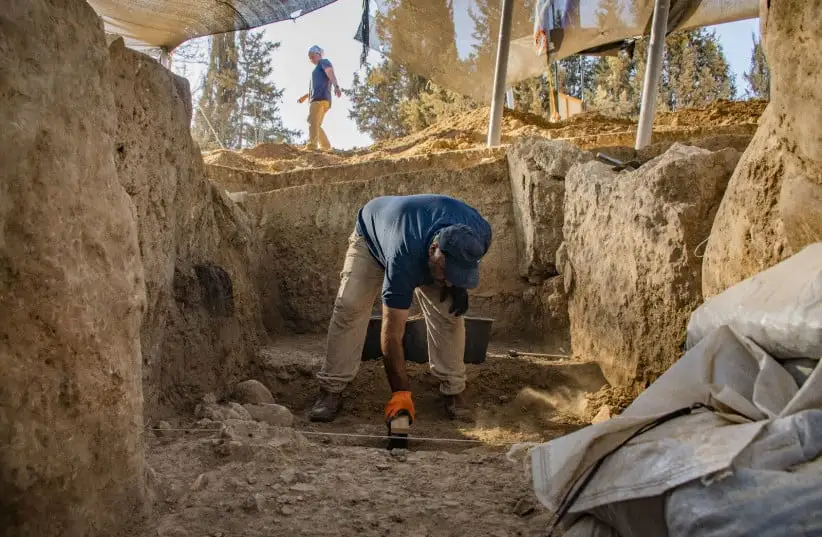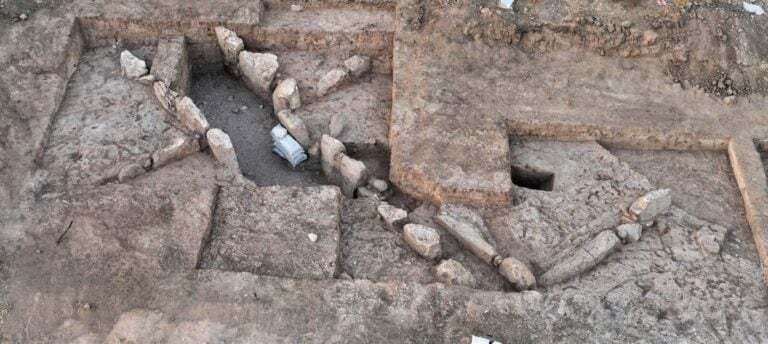Ancient City Gate Is Oldest Found In Israel, Dating Back 5,500 Years
In a remarkable discovery near Kiryat Gat, a city in southern Israel, archaeologists have revealed the remains of an ancient gate that dates back 5,500 years.
This newly unearthed gate is believed to be the oldest of its kind ever found in Israel.

The finding came to light during excavations at Tel Erani, an archaeological site. The exploration was prompted by the upcoming installation of a water pipeline by the Mekorot Water Company, which aims to provide water to the Intel factory in the region.
The gate is just a part of a larger fortification system that was uncovered at the site. These fortifications, which date back to around 3,300 BCE, belong to the early Bronze Age. This era marks the beginning of urban development in the Land of Israel and the Southern Levant region.
Newly unearthed gate rewrites Israel’s ancient history
In a groundbreaking revelation, archaeologists have rewritten Israel’s history with the unearthing of a 5,500-year-old city gate at Tel Erani near Kiryat Gat in southern Israel. This incredible discovery now stands as the oldest city gate ever found in Israel, predating the previously known gate at Tel Arad by about three hundred years.
The gate, an extraordinary find from the past, has survived over millennia, with approximately 1.5 meters of it remaining intact. The remains offer a glimpse into the past—a passageway crafted from large stones that served as the entryway to the ancient city.
This gateway stands flanked by two robust stone towers, complemented by rows of mudbricks. Notably, this gate is also connected to the city walls that were previously uncovered in earlier excavation efforts.
Following meticulous excavation, steps were taken to safeguard the historic gate from erosion. It was carefully covered to shield it from the elements and ensure its long-term preservation. In a thoughtful move to prioritize the ancient gate’s historical value, the planned water pipe installation was adjusted, allowing for the gate’s protection and continued study.
Ancient gate discovery sheds light on early cities
Emily Bischoff, leading the excavation for the Israel Antiquities Authority, revealed the significant findings about the newly uncovered gate. This monumental discovery marks the first time a gate of such magnitude from the Early Bronze Age has come to light.
Bischoff emphasized, “This is the first time that such a large gate dating to the Early Bronze Age has been uncovered. In order to construct the gate and the fortification walls, stones had to be brought from a distance, mudbricks had to be manufactured, and the fortification walls had to be constructed. This was not achieved by one or a few individuals. The fortification system is evidence of social organization that represents the beginning of urbanization.”
Expert insights unveil the purpose of the newly discovered gate
Martin-David Pasternak, a distinguished researcher from the Israel Antiquities Authority specializing in this era, offered further insights into the significance of the recently found gate.

Pasternak shared that anyone likely passing by, including traders, travellers, or potential adversaries, had to traverse this remarkable gateway before entering the city. However, this ancient gate was more than just a defensive structure.
It conveyed a powerful message that resonated politically, socially, and economically. It signalled that those crossing its threshold were entering a thriving, well-organized settlement of great importance. This message extended not only to local inhabitants but also to outsiders, including perhaps neighbouring Egypt.
Interestingly, during this period, Egypt was in the midst of a process that eventually led to the unification of Lower and Upper Egypt under King Narmer. The gate’s existence could have held significance in the broader regional context, hinting at the developments unfolding in Egypt during that time.
Pasternak further said that “at the end of the Early Bronze Age, the Egyptians themselves arrived here and settled…[down], and they reused the gate.”
Statement from Israel Antiquities Authority archaeologist
Dr. Yitzhak Paz, an Israel Antiquities Authority archaeologist specializing in the Early Bronze Age period, explained that Tel Erani was an important early urban centre in the area during the Early Bronze Age.
He said, “The tel site was part of a large and important settlement system in the southwestern area of the country in this period.” Paz further said, “Within this system, we can identify the first signs of the urbanization process, including settlement planning, social stratification, and public building.
The newly uncovered gate is an important discovery that affects the dating of the beginning of the urbanization process in the country.”
“The extensive excavations carried out by the Israel Antiquities Authority over recent years have led to dating the beginning of urbanization to the end of the fourth millennium BCE, but the excavations carried out at Tel Erani have now shown that this process began even earlier, in the last third of the fourth millennium BCE.”
The explorations at Tel Erani had their genesis in the mid-1950s, with contributions from the Department of Antiquities, the Israel Antiquities Authority, Ben-Gurion University of the Negev, and the University of Krakow in Poland.
These collaborative efforts have unravelled a wealth of archaeological treasures, painting a clearer picture of our past.



